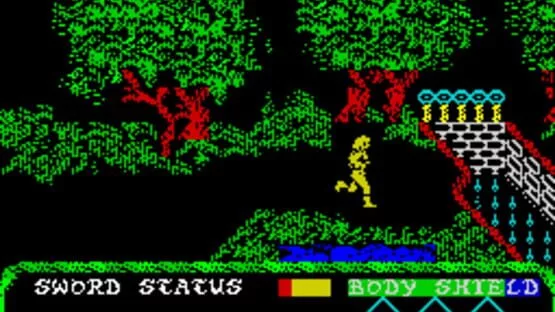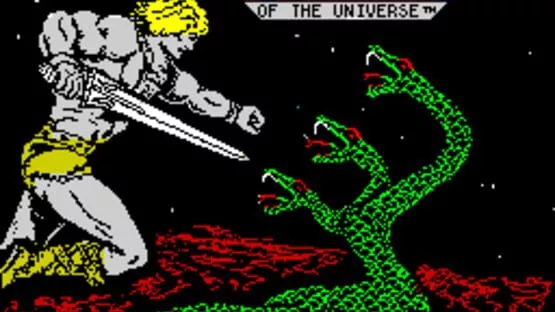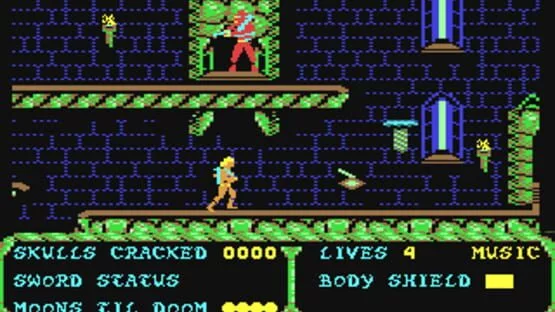
Masters of the Universe: The Arcade Game (1987)
Genres:Platform, Arcade
Themes:Action, Fantasy
Game modes:Single player
Story:Masters of the Universe: The Arcade Game is a platform game developed by Adventure Soft for the Amstrad CPC, BBC Micro, Commodore 64, and ZX Spectrum and published by U.S. Gold in 1987. The game is part of the Masters of the Universe media franchise. The Commodore 64 version is titled He-Man and the Masters of the Universe: The Ilearth Stone.Show more
Vote to bring this game to GOG and help preserve it.17

Gran Trak 10Gran Trak 10 was a single-player racing arcade game released by Atari in 1974. The player raced against the clock, accumulating as many points as possible. Primitive diode-based ROM was used to store the sprites for the car, score and game timer, and the race track. The game's controls — steering wheel, four-position gear shifter, and accelerator and brake foot pedals — were also all firsts for arcade games.Action
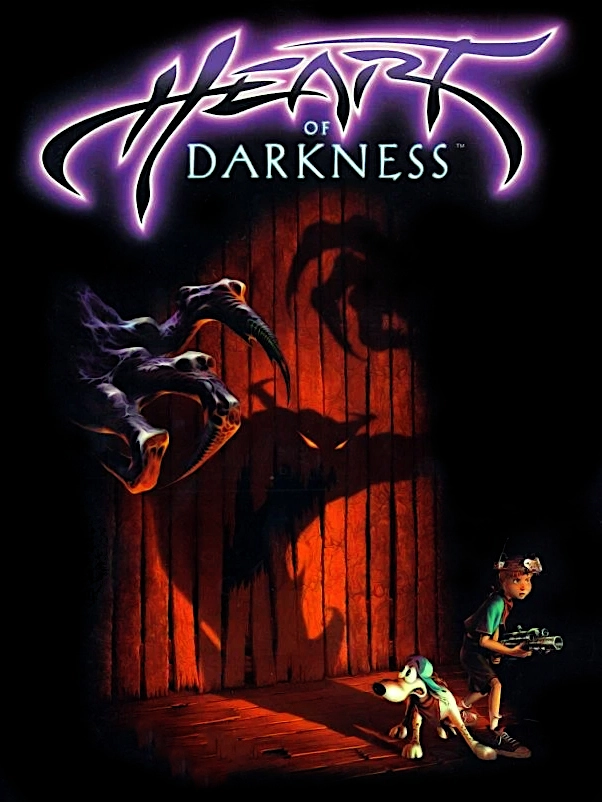
Heart of DarknessHeart of Darkness places players in the role of a child named Andy as he attempts to rescue his dog who has been kidnapped by creatures known as The Dark Souls. The game has about half an hour of storytelling cinematic sequences, thousands of 2D animated frames, and uses pre-rendered background scenery. The game was supervised by game developer Éric Chahi, known for Another World, this time with a team of artists and developers. The game also features an original score by film and television composer Bruce Broughton.
A Game Boy Advance port was announced in 2001 but it was never released.Comedy Horror Science fiction
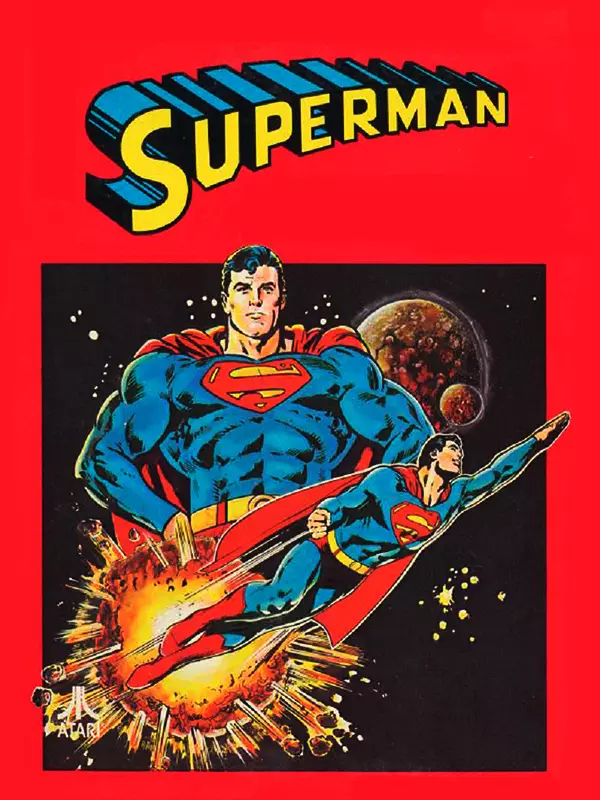
SupermanSuperman is an action adventure game for the Atari 2600. It was one of the first single-player games for the system and one of the earliest licensed video games. Superman is one of the first to utilize multiple screens as playing areas.Action
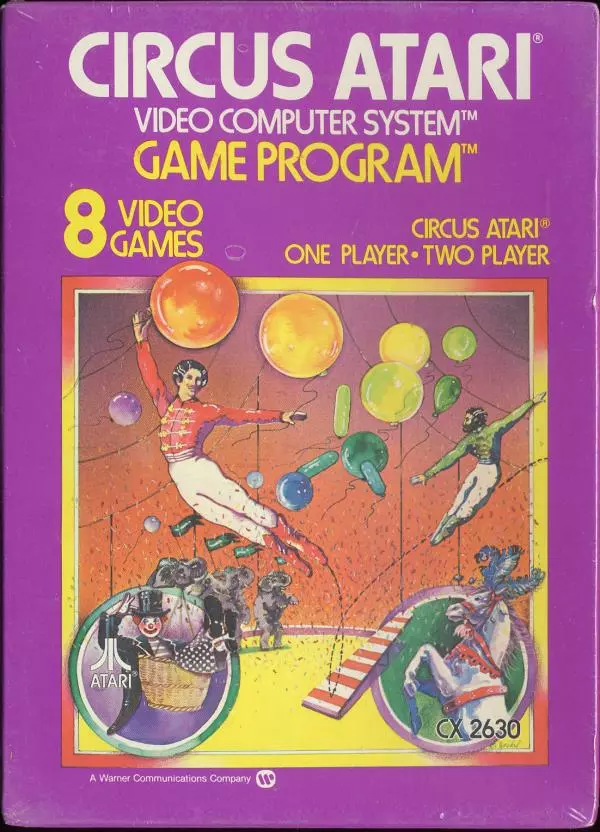
Circus Atari3 rows of triangular balloons move along the top part of the screen, each overlaid with blue, green, and yellow (colors used in the original version), counting from the top row. A clown appears from the edge of the screen where there is a jumping board, and the player must move the seesaw located at the bottom of the screen so that the clown can bounce back off the seesaw once he jumps off from his starting position. If the player successfully gets the clown onto the seesaw, the clown on the other side shoots off into the air towards the 3 rows of balloons on the top of the screen. The clown may not have enough speed to reach the balloons if the first clown does not land squarely on the seesaw. Clowns bounce off of balloons, walls, and jumping boards, but will pass directly through multiple balloons if they are moving quickly enough. They will only bounce off the jumping boards when they are heading downwards, and will pass straight through the boards while moving upwards.Action Comedy

AladdinAladdin is a Famicom port of the Sega Mega Drive game of the same name, made by Super Game and published by Realtec.Action
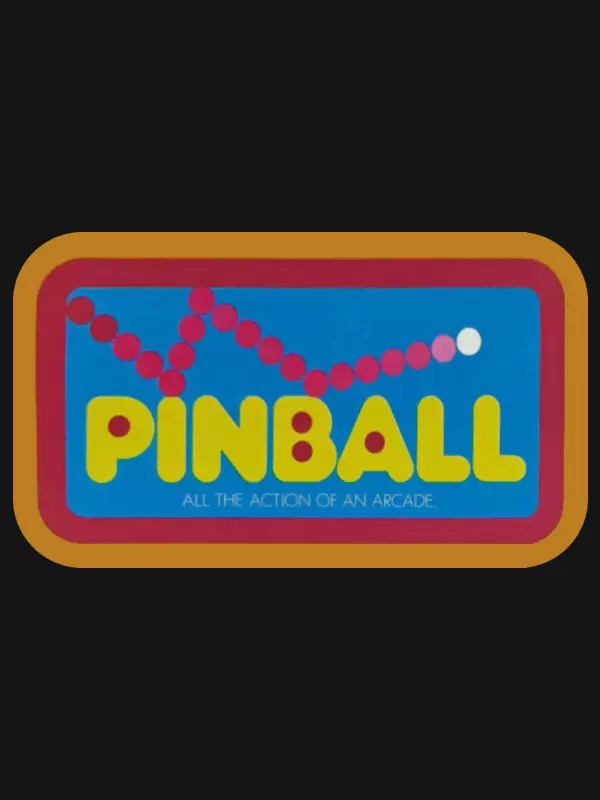
PinballPinball is a 'pinball simulation' on the Microvision system but plays like Breakout.
Controls are the same as in Block Buster: players use the paddle knob to move a paddle left and right along the bottom of the gameplay screen to bounce up a ball.
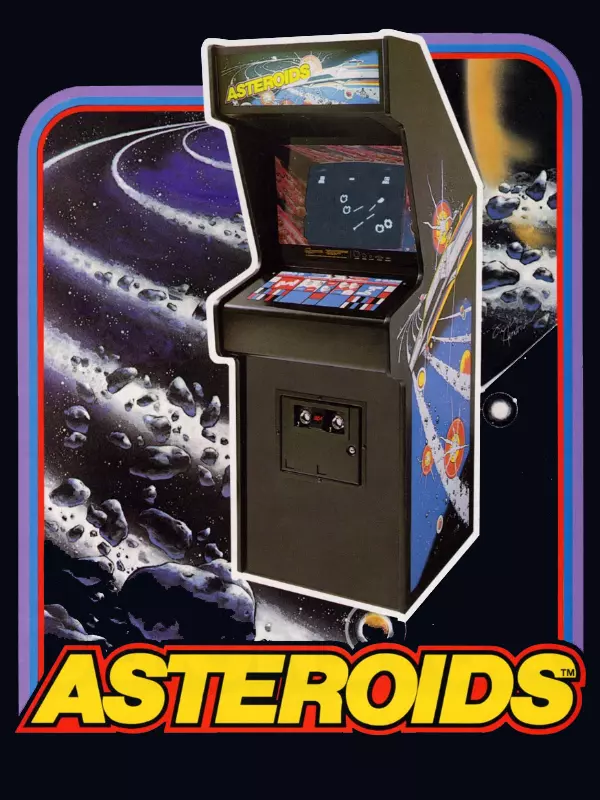
AsteroidsAsteroids is an arcade space shooter released in November 1979. The player controls a spaceship in an asteroid field which is periodically traversed by flying saucers. The objective of the game is to destroy both, asteroids and saucers. The triangular ship can rotate left and right, fire shots straight forward, and thrust forward. Once the ship begins moving in a direction, it will continue in that direction for a time without player intervention unless the player applies thrust in a different direction. The ship eventually comes to a stop when not thrusting. The player can also send the ship into hyperspace, causing it to disappear and reappear in a random location on the screen, at the risk of self-destructing or appearing on top of an asteroid.Action Science fiction
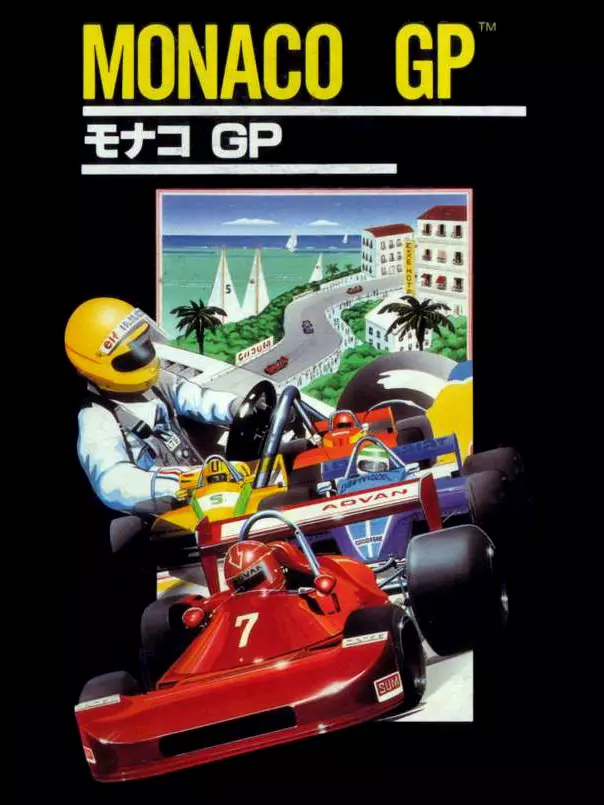
Monaco GPMonaco GP is an arcade game that was released by Sega in 1979. The game was released in three cabinet styles, a vertical upright cabinet, a cocktail table and sit-down 'deluxe' cabinet. A sequel, Pro Monaco GP, was released in 1980, and was later followed by Super Monaco GP and Ayrton Senna's Super Monaco GP II. Monaco GP was ported to the SG-1000 in 1983.Action
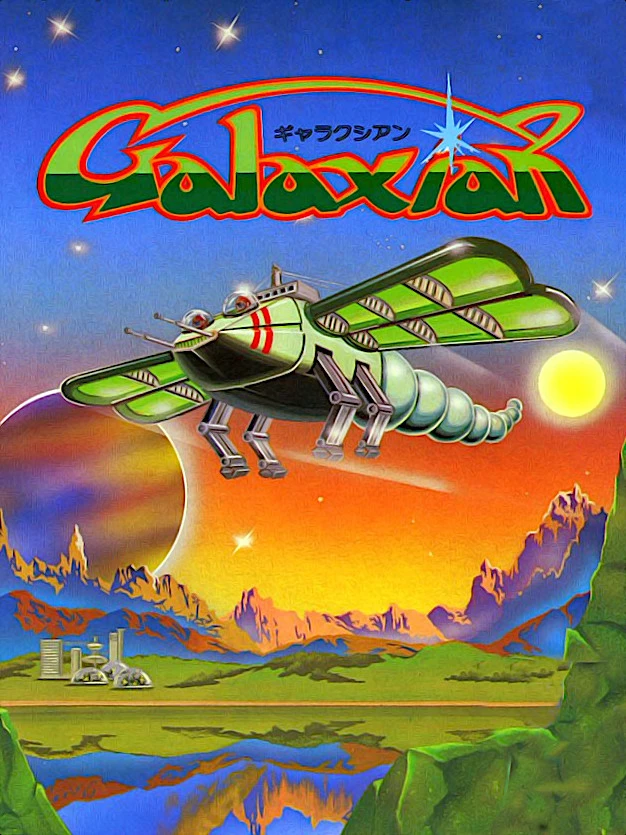
GalaxianGalaxian is a shooter arcade game developed by Namco in 1979. It was released by Namco in Japan and a few months later by Midway Games in North America. The game was developed to compete with Taito Corporation's Space Invaders, released a year earlier, and featured a similar space theme. The player controls a space ship in the bottom part of the screen and shoots at enemies descending from the top of the screen.
The game was received very well by the public and has continued to be a game with a competitive community to this day. It was followed by a successful sequel called Galaga in 1981 and two less known sequels called Gaplus in 1984 and Galaga '88 in 1987. Galaxian was one of the most popular games in the golden age of arcade video games.Science fiction
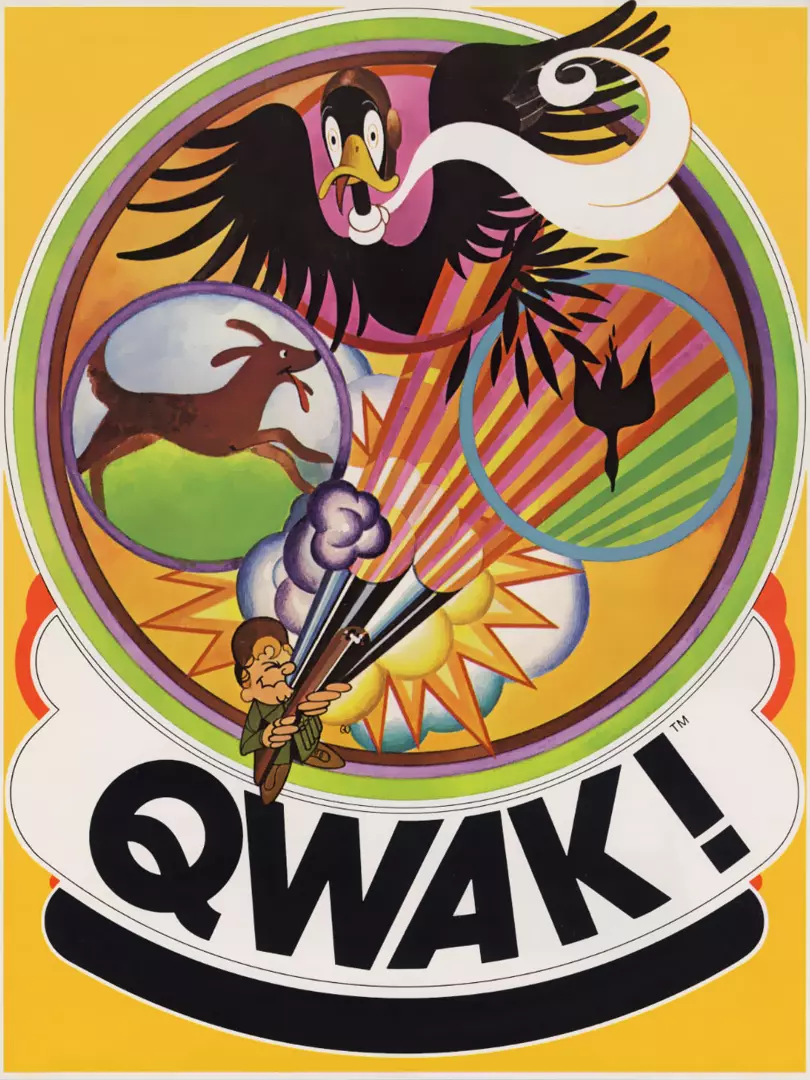
Qwak!Qwak! is a duck hunting light gun shooter arcade video game developed by Atari and released in 1974.
In the game, ducks fly one at a time across the screen, and the player shoots at them using a light gun attached to the game cabinet. The player gets three shots per duck; ducks change direction away from missed shots and fall to the bottom of the screen when hit. A screen overlay adds images of reeds and a tree branch, and an image of a duck is added to a row at the top of the screen whenever a duck is hit. Games continue until a time limit, set by the machine operator, is reached.
Qwak! is most likely the inspiration for the 1984 Nintendo Entertainment System light gun game Duck Hunt.Action

